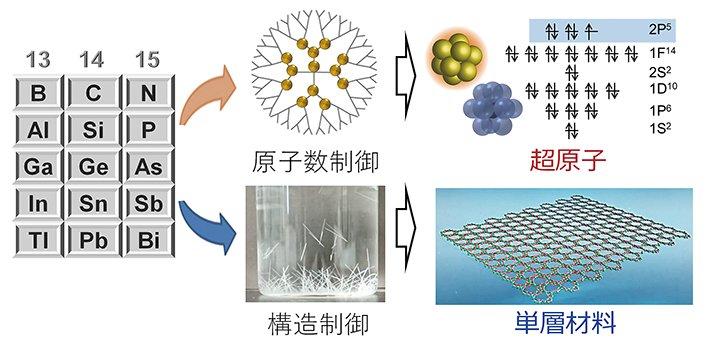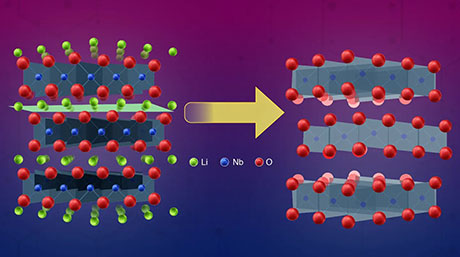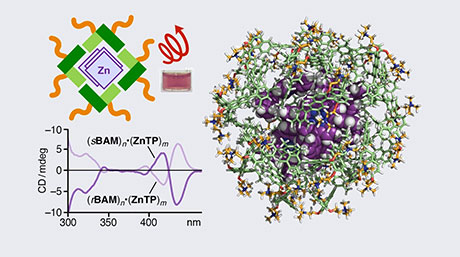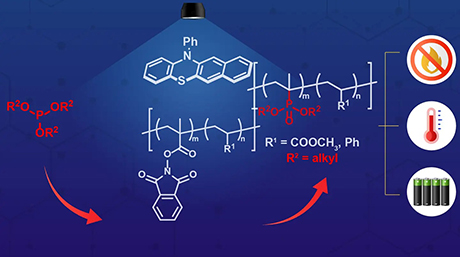Chemical Science and Engineering News
Associate Professor ISHIGE Ryohei, Assistant Professor KAMBE Tetsuya and Assistant Professor MATSUI Naoki received the 2022 Tokyo Tech Challenging Research Award.
Assoc. Prof. ISHIGE Ryohei and Asst. Prof. KAMBE Tetsuya were also selected the Suematsu Challenging Research Award.
Associate Professor ISHIGE Ryohei , Department of Chemical Science and Engineering, School of Materials and Chemical Technology; Assistant Professor KAMBE Tetsuya, Laboratory for Chemistry and Life Science, Institute of Innovative Research; and Assistant Professor MATSUI Naoki, Research Center for All-Solid-State Battery, Institute of Innovative Research received the 21st Tokyo Tech Challenging Research Awards.
Associate Professor ISHIGE Ryohei and Assistant Professor KAMBE Tetsuya were also selected for the Suematsu Challenging Research Award.
The award ceremony will be held on September 1st, 2022.
To encourage young faculty members at Tokyo Tech to engage in challenging research, Tokyo Tech has established the
Challenging Research Award for creative, up-and-coming researchers who boldly pursue the promotion of the most advanced
research in the world, pioneering of new fields of study, innovative development of new research, and important issues
that are difficult to solve. We commend the recipients of this award and provide them with financial support for their
research. Many of the researchers who won this award have also gone on to win the Commendation for Science and
Technology by the Minister of Education, Culture, Sports, Science and Technology.
In 2022, 10 researchers were awarded, including Associate Professor ISHIGE Ryohei, Assistant Professor KAMBE Tetsuya, and Assistant Professor MATSUI Naoki,and 3 of them won the Suematsu Challenging Research Award.
Click here![]() to see the recipients of the 21st Tokyo Tech Challenging Research Award.
to see the recipients of the 21st Tokyo Tech Challenging Research Award.
The Suematsu Challenging Research Award is given to the highest qualified researchers among the Challenging Research Award winners.This award was established by the "Suematsu Fund", which was created based on the desire of former President SUEMATSU Yasuharu to support young researchers.The Fund supports mainly young researchers to encourage their research activities to predict and study the development of unexplored scientific and technological systems in diverse fields and to bring the potential future to real society. This year, three researchers, including Associate Professor ISHIGE Ryohei and Assistant Professor KAMBE Tetsuya, received the award.
Award Winners
| Name | Affiliation | Title | Research topic ★ Granted Suematsu Challenging Research Award |
|---|---|---|---|
|
ISHIGE Ryohei |
School of Materials and Chemical Technology | Associate Professor | ★Vertically-aligned highly functional rigid aromatic polymers utilizing smectic liquid crystal |
|
KAMBE Tetsuya |
Laboratory for Chemistry and Life Science, Institute of Innovative Research | Assistant Professor | ★Development of finely-controlled synthesis for inorganic nanomaterials to realize artificial elements |
|
MATSUI Naoki |
Research Center for All-Solid-State Battery, Institute of Innovative Research | Assistant Professor | Energy and hydrogen storage devices based on hydride |
Comments from the Suematsu Challenhging Research Award winners
Associate Professor ISIHGE Ryohei

Associate Professor ISHIGE Ryohei
Rigid polymers such as polyimide and polythiophene, which have a rigid rod-like structure composed of aromatic rings, are used in a variety of applications ranging from insulating layers in electronic circuits to semiconductor layers in organic thin-film solar cells, because of not only their flexibility but also the excellent heat resistance beyond other flexible polymers. If these rigid polymers could be aligned perpendicularly to the film, extremely useful properties would be realized, such as high thermal and electrical conductivity in the film thickness direction. However, this is very challenging due to thermodynamic limitations. In this research, we focused on the properties of smectic liquid crystals that spontaneously form layered structures, as found in soap bubbles and cell membranes, to challenge the control of the vertical alignment of rigid polymers. Before now, we successfully fabricated unique polyimide films containing more than 70% of vertically aligned components. The key to the formation of the layered structure is the molecular structure in which electron-withdrawing and electron-donating monomers are alternately bound in the main chain. Since similar structures are common to polycondensation polymers, this strategy will be applicable to all other useful rigid polymer materials.
Finally, I am very honored to receive the prestigious Tokyo Tech Challenging Research Award and the Suematsu Challenging Research Award. I would like to express my sincere gratitude to Professor Shinji Ando for supporting this research, Mr. Shohei Hara (M.S., 2020) for collaborating this research, and all the students and graduates of our laboratory. I also would like to express my deep appreciation for the great support of Tokyo Tech for young researchers.

Strategy of vertical orientation of rigid aromatic polymers
Assistant Professor KAMBE Tetsuya

Assistant Professor KAMBE Tetsuya
Superatoms are special metal particles composed of several atoms, and have been studied as promising building blocks for new materials due to the feature of having unique periodicity like atoms. Such superatoms are expected not only to replace scarce elements such as precious metals and rare earths, but also to perform as unknown elements which have new electronic state. The research on superatoms has been developed from the theoretical field, and imitation of various elements and the reactivity of superatoms are proposed. In particular, it is attractive for superatoms to be able to control the electronic properties depending on the number of valence electrons, which has drawn wide attention as new materials that researchers are capable of designing the properties. In contrast to these developments in the theoretical field, research on superatom synthesis has been limited to either detection under high vacuum or synthesis of stable clusters using organic ligands. Beyond these backgrounds, I have developed atomicity control methods for the chemical species of the main group elements of groups 13-15, and have developed functional nanostructures and superatoms. In addition to the solution-phase synthesis of superatoms, a new technique for controlling the shape of a single-layer structure was proposed using boron units. The obtained boron layered material was found to be an inorganic liquid crystal with wide application potential. The aim of this research is to develop superatom synthesis with finely controlled atomicity and structures by making full use of template polymers and interfacial reactions, and eventually, to be able to synthesize various 2D materials with superatomic nature.
I greatly appreciate the support of Professor Kimihisa Yamamoto, Associate Professor Takane Imaoka, the many other professors and all of the project staff and laboratory members.

Precise inorganic synthesis with controlled atomic number and structure
- YAMAMOTO-IMAOKA Group
- Inorganic Borophene Liquid Crystals: A Superior New Material for Optoelectronic Devices|Tokyo Tech News
- Atom by Atom: Building Precise Smaller Nanoparticles with Templates|Tokyo Tech News
- Synthesizing a Superatom: Opening Doors to their Use as Substitutes for Elemental Atoms|Tokyo Tech News
- Can't get thinner than this: synthesis of atomically flat boron sheets|Tokyo Tech News
Related Links
- Challenging Research Award|Research Support Activities|Office of Research and Innovation,Tokyo Institute of Technology
- Chemical Science and Engineering Graduate Major|Education|Department of Chemical Science and Engineering, School of Materials and Chemical Technology
- Energy Science and Engineering Graduate Major|Education|Department of Chemical Science and Engineering, School of Materials and Chemical Technology
- Chemical Science and Engineering Undergraduate Major|Education|Department of Chemical Science and Engineering, School of Materials and Chemical Technology
Tokyo Institute of Technology iGEM is supported by Tokyo Tech Fund
※ This article has been updated to correct a typographical error on September 1.






